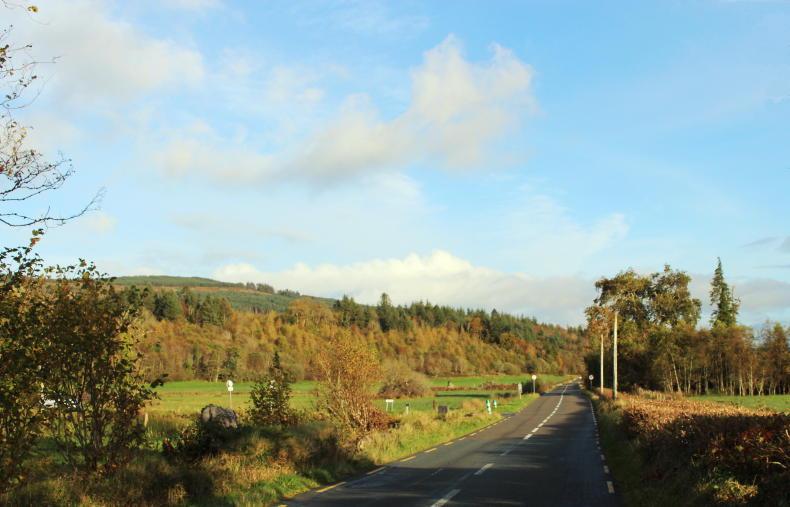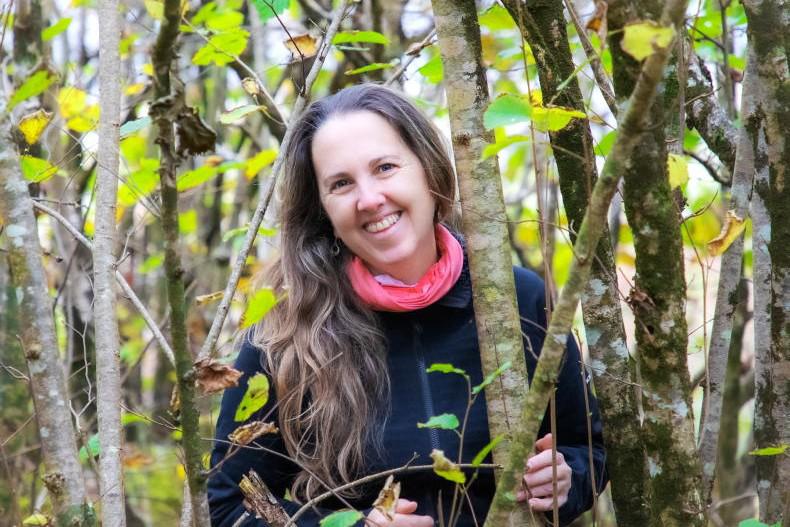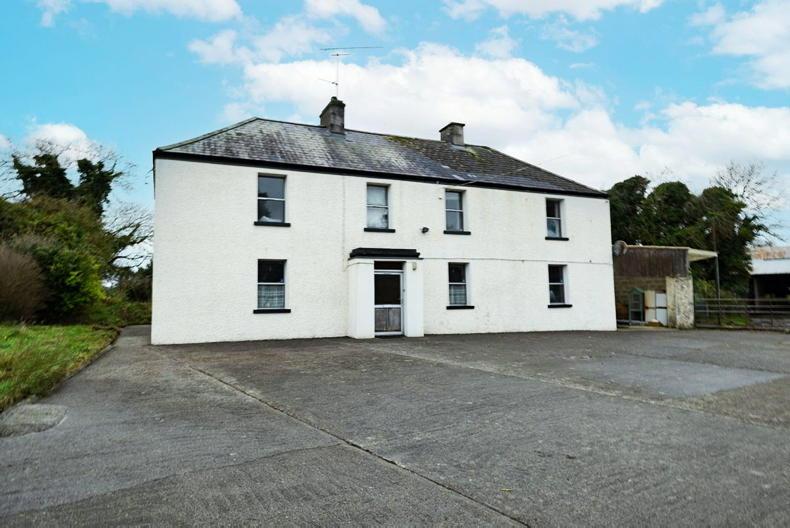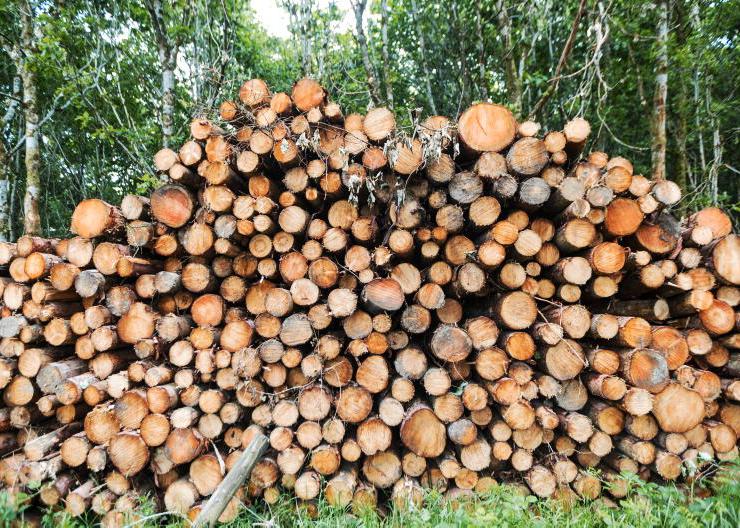There are now two surveys on public attitudes towards forestry in Ireland which should influence – and inform – the Forest Strategy to 2030, which will, according to Minister of State Pippa Hackett “underpin a new Forestry Programme for the period 2023-2027”.
Although the strategy has yet to be agreed, the minister has published her Shared National Vision for Trees, Woods and Forests in Ireland until 2050, which she says “is every bit as much for the wider public as it is for those working in the forestry sector.”
It is worth comparing both surveys: Attitudes to Afforestation in Ireland, conducted by Behaviour and Attitudes (B&A) on behalf of the Department of Agriculture, Food and the Marine (DAFM) and Assessment of Attitudes by Communities and Interested Parties on Forestry and Woodlands, conducted by staff of Irish Rural Link (IRL), Louise Lennon, Seamus Boland, Brendan Mulry and Paddy Malone for IRL, also on behalf of DAFM.
B&A study
The B&A study found that “three out of four people were in favour of planting more forests in their county, as well as more trees in urban areas.”
When this study was published, Minister Hackett said the survey “found a very positive attitude in general to forestry.” The study also found that:
Overall, 88% of those surveyed said they thought forests and woodlands benefited local communities. When asked to quantify the most important benefits of forests, 25% of respondents opted for climate change, followed by enhanced air quality (15%), wildlife and biodiversity (14%) and mental health (14%).
Almost two in five people said they would like an even balance of forests and agriculture in their ideal landscape, while a further quarter would like a forest-dominated landscape.
A majority of people (72%) favoured planting broadleaf and conifer trees in new forests, with 17% favouring broadleaves and 11% favouring conifers.
Some 58% of people who visited a forest in 2021 cited exercise and recreation as the key visit driver. The survey found that 57% of respondents said they visited woodlands more since the COVID-19 pandemic began compared to 2019. While it might be assumed that visitor numbers would drop significantly since COVID-19 restrictions have been removed, Mark Carlin, managing director, Coillte Forest, said this was not the case.
He told the audience at the launch of a seating project to honour the poet Seamus Heaney in Coillte’s Devil’s Glen forest, Co Wicklow, recently that “visitor numbers have not fallen significantly since restrictions have been lifted and we expect the number of visitors to our forests to remain high.”
IRL study
The IRL survey results – along with the focus groups consulted – “highlighted the need to increase Ireland’s forestry and woodland coverage.”
It also stated: “The need to move away from fossil fuel to renewable heat sources as well as meeting housing targets will require an increase in timber and other wood products”
In addition, it also highlighted “the many benefits forestry, woodlands and trees can provide for biodiversity, as an education resource and for mental and physical health.” While the survey’s conclusions make reference to the “the impact certain monoculture and excessive and dense plantations of Sitka Spruce have had on some communities,” there is no statistical data on species composition preference to support this view.
The study does, however, provide data on the types of forests preferred. For example, respondents preferred mixed species (65%), more native species (60%), continuous cover forestry (32%) and commercial forestry (39%).
Respondents were asked if they felt forestry had a “positive or negative impact” on a list of areas. If you delete those who expressed no opinion, the percentage of respondents positively disposed towards forestry ranged from 65% to 84% in the following seven areas; communities (65%), landscape aesthetics (66%), local employment (75%), timber production (75%), amenity and recreation (84%), biodiversity (72%) and carbon storage (83%).
Summary
This is just a snapshot of two very detailed surveys on peoples’ attitudes to forestry, but in the main they are positive.
Minister Hackett acknowledged the positive attitude towards forests and woodlands in the B&A study “with 88% agreeing that forests provide benefits to local communities” while “four out of five linked the importance of new forests to climate change mitigation and conservation”.
Both reports demonstrate that forests and woodlands are important amenities as shown by the huge number of visitors during COVID-19 and that have continued since restrictions have been lifted.
“The findings emphasise the importance that people put on woodlands and forests, especially among those who make 29m visits annually to Irish forests,” said Pat O’Sullivan of the Society of Irish Foresters.
“So while the results of both findings are positive and encouraging, they are not surprising,” he said.
Readers should check both reports and compare them. Google Assessment of Attitudes by Communities and Interested Parties on Forestry and Woodlands for the IRL survey and Attitudes to Afforestation in Ireland for the B&A study.
Forestry stakeholders comment on a development agency
The proposal to establish a Forestry Development Agency is supported by stakeholders representing industry, forestry, farming, sawmilling and producer organisations. We feature the views of some of the representatives of these groups on such an agency below.
Industry
“Forest Industries Ireland (FII) supports the creation of a Forestry Development Agency. It should be given the mandate and budget to make meaningful changes to the current forestry model and re-energise afforestation. Simplification of rules, increased incentives and a practical approach that removes unnecessary complications are all vital.”
– Mark McAuley, director FII, the forestry group in Ibec.
“For Ireland to achieve and sustain its emission targets will require a doubling of the land area under forest. Forestry is recognised as a key element in mitigation of climate change and biodiversity loss, but it is without a clear consensus as to how it should proceed.
“An independent national Forestry Development Agency with a clear mandate is essential to drive the progression of an efficient and sustainable forestry and wood use programme, for the good of all.”
– Traolach Layton, forestry manager, GP Wood.
Farmers and growers
“Given the scale and the ambition for forestry in the Climate Action Plan, compared with the current performance of farm afforestation in particular, it is inconceivable to see a viable planting programme being achieved without an independent Forestry Development Agency.
“The agency is required to support and enable the forest sector, to not only achieve the afforestation targets, but also to support private wood mobilisation and increase its value across the supply chain.”
– Geraldine O'Sullivan, senior policy executive, IFA farm forestry committee.
“The need for a Forestry Development Agency was made all the more relevant recently when Professor Cathal O’Donoghue made the point that there is a difference between regulation and development.
“Who has the responsibility for the development of the sector without a dedicated agency to do so? Historic low afforestation rates and a licensing system that currently isn’t delivering for people are strong reasons why a development agency is urgently needed.”
– Marina Conway, CEO Western Forestry Co-op.
“Irish Forest Owners fully supports the call for an independent Forestry Development Agency. It has become abundantly clear that we cannot continue with business as usual, with a single entity trying to both regulate and promote forestry.
“Farmers and forest owners have lost complete confidence in the system to the point where farmers are not planting any trees.
“We need a new independent agency to restore trust and kick-start afforestation, with a mission to promote high-quality Irish forest products and to administer a streamlined functioning forestry sector, where all farmers, foresters, contractors, nurseries and sawmills can work in a stable business environment.”
– Olive Leavy, CEO, Irish Forest Owners.
Forestry and nurseries
“That forestry is the only natural resource in Ireland without the support of an independent development agency needs to be addressed urgently, especially now as it is identified in our Climate Action Plan as the most important land use in helping Ireland to achieve net zero by 2050.”
- Pat O’Sullivan, technical director, Society of Irish Foresters.
“An independent Forestry Development Agency is now more important than ever. It needs to be established in conjunction with a fully resourced forest research sector where all facets of Irish forestry will be assisted, from climate change mitigation to import substitution and employment creation.”
– Padraig Egan, general manager, SWS Forestry.
“It is clear a development agency is urgently needed for Government to deliver on future climate action afforestation targets. Existing structures offer little confidence to anyone, particularly nurseries who are without any guidance around future levels of likely plant demand. Such an agency would provide vision to allow the sector to transition from reactive to proactive. It needs to be in place to ensure the future of subsequent forestry programmes.
– Teige Ryan, director, None-so-Hardy Nurseries and chair, SEEFA.
There are now two surveys on public attitudes towards forestry in Ireland which should influence – and inform – the Forest Strategy to 2030, which will, according to Minister of State Pippa Hackett “underpin a new Forestry Programme for the period 2023-2027”.
Although the strategy has yet to be agreed, the minister has published her Shared National Vision for Trees, Woods and Forests in Ireland until 2050, which she says “is every bit as much for the wider public as it is for those working in the forestry sector.”
It is worth comparing both surveys: Attitudes to Afforestation in Ireland, conducted by Behaviour and Attitudes (B&A) on behalf of the Department of Agriculture, Food and the Marine (DAFM) and Assessment of Attitudes by Communities and Interested Parties on Forestry and Woodlands, conducted by staff of Irish Rural Link (IRL), Louise Lennon, Seamus Boland, Brendan Mulry and Paddy Malone for IRL, also on behalf of DAFM.
B&A study
The B&A study found that “three out of four people were in favour of planting more forests in their county, as well as more trees in urban areas.”
When this study was published, Minister Hackett said the survey “found a very positive attitude in general to forestry.” The study also found that:
Overall, 88% of those surveyed said they thought forests and woodlands benefited local communities. When asked to quantify the most important benefits of forests, 25% of respondents opted for climate change, followed by enhanced air quality (15%), wildlife and biodiversity (14%) and mental health (14%).
Almost two in five people said they would like an even balance of forests and agriculture in their ideal landscape, while a further quarter would like a forest-dominated landscape.
A majority of people (72%) favoured planting broadleaf and conifer trees in new forests, with 17% favouring broadleaves and 11% favouring conifers.
Some 58% of people who visited a forest in 2021 cited exercise and recreation as the key visit driver. The survey found that 57% of respondents said they visited woodlands more since the COVID-19 pandemic began compared to 2019. While it might be assumed that visitor numbers would drop significantly since COVID-19 restrictions have been removed, Mark Carlin, managing director, Coillte Forest, said this was not the case.
He told the audience at the launch of a seating project to honour the poet Seamus Heaney in Coillte’s Devil’s Glen forest, Co Wicklow, recently that “visitor numbers have not fallen significantly since restrictions have been lifted and we expect the number of visitors to our forests to remain high.”
IRL study
The IRL survey results – along with the focus groups consulted – “highlighted the need to increase Ireland’s forestry and woodland coverage.”
It also stated: “The need to move away from fossil fuel to renewable heat sources as well as meeting housing targets will require an increase in timber and other wood products”
In addition, it also highlighted “the many benefits forestry, woodlands and trees can provide for biodiversity, as an education resource and for mental and physical health.” While the survey’s conclusions make reference to the “the impact certain monoculture and excessive and dense plantations of Sitka Spruce have had on some communities,” there is no statistical data on species composition preference to support this view.
The study does, however, provide data on the types of forests preferred. For example, respondents preferred mixed species (65%), more native species (60%), continuous cover forestry (32%) and commercial forestry (39%).
Respondents were asked if they felt forestry had a “positive or negative impact” on a list of areas. If you delete those who expressed no opinion, the percentage of respondents positively disposed towards forestry ranged from 65% to 84% in the following seven areas; communities (65%), landscape aesthetics (66%), local employment (75%), timber production (75%), amenity and recreation (84%), biodiversity (72%) and carbon storage (83%).
Summary
This is just a snapshot of two very detailed surveys on peoples’ attitudes to forestry, but in the main they are positive.
Minister Hackett acknowledged the positive attitude towards forests and woodlands in the B&A study “with 88% agreeing that forests provide benefits to local communities” while “four out of five linked the importance of new forests to climate change mitigation and conservation”.
Both reports demonstrate that forests and woodlands are important amenities as shown by the huge number of visitors during COVID-19 and that have continued since restrictions have been lifted.
“The findings emphasise the importance that people put on woodlands and forests, especially among those who make 29m visits annually to Irish forests,” said Pat O’Sullivan of the Society of Irish Foresters.
“So while the results of both findings are positive and encouraging, they are not surprising,” he said.
Readers should check both reports and compare them. Google Assessment of Attitudes by Communities and Interested Parties on Forestry and Woodlands for the IRL survey and Attitudes to Afforestation in Ireland for the B&A study.
Forestry stakeholders comment on a development agency
The proposal to establish a Forestry Development Agency is supported by stakeholders representing industry, forestry, farming, sawmilling and producer organisations. We feature the views of some of the representatives of these groups on such an agency below.
Industry
“Forest Industries Ireland (FII) supports the creation of a Forestry Development Agency. It should be given the mandate and budget to make meaningful changes to the current forestry model and re-energise afforestation. Simplification of rules, increased incentives and a practical approach that removes unnecessary complications are all vital.”
– Mark McAuley, director FII, the forestry group in Ibec.
“For Ireland to achieve and sustain its emission targets will require a doubling of the land area under forest. Forestry is recognised as a key element in mitigation of climate change and biodiversity loss, but it is without a clear consensus as to how it should proceed.
“An independent national Forestry Development Agency with a clear mandate is essential to drive the progression of an efficient and sustainable forestry and wood use programme, for the good of all.”
– Traolach Layton, forestry manager, GP Wood.
Farmers and growers
“Given the scale and the ambition for forestry in the Climate Action Plan, compared with the current performance of farm afforestation in particular, it is inconceivable to see a viable planting programme being achieved without an independent Forestry Development Agency.
“The agency is required to support and enable the forest sector, to not only achieve the afforestation targets, but also to support private wood mobilisation and increase its value across the supply chain.”
– Geraldine O'Sullivan, senior policy executive, IFA farm forestry committee.
“The need for a Forestry Development Agency was made all the more relevant recently when Professor Cathal O’Donoghue made the point that there is a difference between regulation and development.
“Who has the responsibility for the development of the sector without a dedicated agency to do so? Historic low afforestation rates and a licensing system that currently isn’t delivering for people are strong reasons why a development agency is urgently needed.”
– Marina Conway, CEO Western Forestry Co-op.
“Irish Forest Owners fully supports the call for an independent Forestry Development Agency. It has become abundantly clear that we cannot continue with business as usual, with a single entity trying to both regulate and promote forestry.
“Farmers and forest owners have lost complete confidence in the system to the point where farmers are not planting any trees.
“We need a new independent agency to restore trust and kick-start afforestation, with a mission to promote high-quality Irish forest products and to administer a streamlined functioning forestry sector, where all farmers, foresters, contractors, nurseries and sawmills can work in a stable business environment.”
– Olive Leavy, CEO, Irish Forest Owners.
Forestry and nurseries
“That forestry is the only natural resource in Ireland without the support of an independent development agency needs to be addressed urgently, especially now as it is identified in our Climate Action Plan as the most important land use in helping Ireland to achieve net zero by 2050.”
- Pat O’Sullivan, technical director, Society of Irish Foresters.
“An independent Forestry Development Agency is now more important than ever. It needs to be established in conjunction with a fully resourced forest research sector where all facets of Irish forestry will be assisted, from climate change mitigation to import substitution and employment creation.”
– Padraig Egan, general manager, SWS Forestry.
“It is clear a development agency is urgently needed for Government to deliver on future climate action afforestation targets. Existing structures offer little confidence to anyone, particularly nurseries who are without any guidance around future levels of likely plant demand. Such an agency would provide vision to allow the sector to transition from reactive to proactive. It needs to be in place to ensure the future of subsequent forestry programmes.
– Teige Ryan, director, None-so-Hardy Nurseries and chair, SEEFA.









SHARING OPTIONS